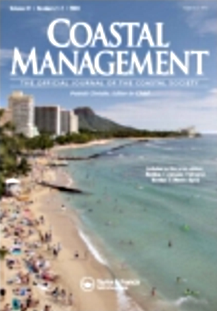 Authors: Maria Jose Barragan-Paladines (TBTI cluster coordinator) & Ratana Chuenpagdee (TBTI Project Director)
Authors: Maria Jose Barragan-Paladines (TBTI cluster coordinator) & Ratana Chuenpagdee (TBTI Project Director)
Coastal Management, DOI: 10.1080/08920753.2017.1345606
The paper reveals the results of the “step zero” approach used to examine what happened prior to the implementation of the Galapagos Marine Reserve in 1998. It shows that the Galapagos Marine Reserve did not arise from a social and political vacuum; rather, events which took place in the distant past, even centuries ago, influenced the reserve’s creation and current status. Its establishment was driven by complex geopolitical, economic, social, and environmental factors from both within and outside Galapagos.
The findings also showcase that the process of creating the Galapagos Marine Reserve was convoluted, marked by hidden interests and conflictive political agendas that triggered controversies between users. The making of the Galapagos Marine Reserve was also influenced by the interest in promoting “nature-based” tourism, and the regulations that followed had disadvantaged small-scale fishers.
This knowledge about the reserve’s pre-implementation phase enables a broader understanding of the current challenges facing the performance of the Galapagos Marine Reserve and points to possible governance interventions needed to enhance its sustainability.
To cite this article: Maria Jose Barragan-Paladines & Ratana Chuenpagdee (2017): A Step Zero Analysis of the Galapagos Marine Reserve, Coastal Management, DOI: 10.1080/08920753.2017.1345606.















